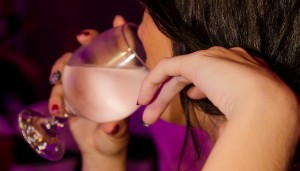- Calls to this hotline are currently being directed to Within Health, Fay or Eating Disorder Solutions
- Representatives are standing by 24/7 to help answer your questions
- All calls are confidential and HIPAA compliant
- There is no obligation or cost to call
- Eating Disorder Hope does not receive any commissions or fees dependent upon which provider you select
- Additional treatment providers are located on our directory or samhsa.gov
Exercise Bulimia and Drunkorexia: The Lesser Known Disorders
Contributor: Staff from Timberline Knolls Residential Treatment Center
 Eating disorders on college campuses are not unusual. Anorexia tends to be evident by virtue of how a student looks. Appearing emaciated, drawn and skeletal is simply not normal. Bulimia is harder to detect based on a person’s appearance unless there are visible cuts and scrapes on the hands or the glands in the neck are clearly swollen.
Eating disorders on college campuses are not unusual. Anorexia tends to be evident by virtue of how a student looks. Appearing emaciated, drawn and skeletal is simply not normal. Bulimia is harder to detect based on a person’s appearance unless there are visible cuts and scrapes on the hands or the glands in the neck are clearly swollen.
Bulimia is more evident as an aspect of dorm life. The sound of vomiting and toilets flushing are more of a giveaway. Eating disorders are very dangerous, in that they have the highest mortality rate of any mental illness.*
Two other food-related disorders are also somewhat common to the college experience: exercise bulimia and drunkorexia. Although less is known about these disorders, each is a complex and dangerous disease.
Exercise Bulimia
Everywhere you turn today, medical professionals, health pundits, and pretty much anyone who can grab a microphone is talking ad nauseam about the obesity problem in the U.S. Therefore, anyone who is dedicated to exercise is surely on the right path.
Although we want to believe this statement is true, that is not always the case. To a large degree, it comes down to motivation. If an individual is committed to exercise to maintain physical health, mental wellbeing, or as part of recreation or the pursuit of a goal such as a marathon, there is no problem whatsoever.
A Fairly New Eating Disorder
This simply means that athleticism is part of a healthy, balanced life. However, if exercise is exclusively a compensatory act, meaning as a way to purge or “pay” for any calories that have been ingested, then a potential problem does exist.
Exercise bulimia is a fairly new eating disorder; it is the term used to describe this type of compulsive exercising. As with bulimia nervosa, this disorder is caused by a combination of physical, psychological and societal factors. These include:
- Genetics
- Abnormal levels of certain chemicals in the brain
- Low self-esteem
- Perfectionism
- Our country’s obsession with thinness
What Exercise Bulimia Entails
 In bulimia, the purging of calories is usually achieved through vomiting after eating. Laxative abuse is also a common component of the purge process. Those with exercise bulimia also feel a similar desire to purge calories, but for whatever reason do not engage in vomiting; perhaps they find the act physically impossible or so odious that they cannot bring themselves to do it.
In bulimia, the purging of calories is usually achieved through vomiting after eating. Laxative abuse is also a common component of the purge process. Those with exercise bulimia also feel a similar desire to purge calories, but for whatever reason do not engage in vomiting; perhaps they find the act physically impossible or so odious that they cannot bring themselves to do it.
So, they consume the cookies, or pizza, or ice cream, then head to the gym. They remain on the treadmill, or elliptical, eyes glued to the calorie counter until the calories are eradicated. This activity is not done for enjoyment; it is done as a form of punishment for eating.
Signs and Symptoms of Exercise Bulimia:
- Exercise even when sick or injured
- Prioritizing exercise over social dates, family functions, work, or school
- Intense fear at states of rest
- Intense anxiety at situations where preferred method of exercise is unavailable
- Intense guilt when forced to stray from exercise routine
- Refusal to eat if unable to exercise
Exercise bulimia basically unfolds like every other addiction. The person thinks they have found the answer, the way to cope, the way to have it all. They are in control; the problem is, the illness eventually controls them.
Everything suffers:
- Social relationships
- Academic performance
- Physical health
If thwarted from their exercise regimen, they become highly agitated, emotionally distraught and suffer profound guilt.
Consequences of Compulsive Exercise
Compulsive exercise can result in:
- Injuries such as stress fractures
- Strains and sprains
- Fatigue
- Dangerous dehydration
- Osteoporosis
- Arthritis
- Reproductive problems
- Heart problems
It can also result in low body fat, which can cause a woman to stop menstruating. In turn, she may suffer bone loss.
Exercise is meant to be a positive, life-affirming experience. If you, or someone you know, struggle with exercise bulimia, get help.
Drunkorexia
Drinking is a common aspect of college life. However, most people know that alcoholic beverages, by and large, are calorie dense. So, what is a female college student, ever mindful of the dangers of weight gain, to do?
For many, the answer is found in drunkorexia. This term is used to describe a combination of anorexia, bulimia and alcoholism. This is not a medical term, it serves more as slang for a female who starves herself throughout the day, then goes out at night and drinks to excess.
Avoiding Food to Drink More
 The word drunkorexia is somewhat misleading in that it implies that alcohol abuse is strongly tied to anorexia. However, this is not the case. A woman with anorexia tends to avoid alcohol consumption altogether. Even if she eats nothing during the day, the high caloric content of alcohol is alarming.
The word drunkorexia is somewhat misleading in that it implies that alcohol abuse is strongly tied to anorexia. However, this is not the case. A woman with anorexia tends to avoid alcohol consumption altogether. Even if she eats nothing during the day, the high caloric content of alcohol is alarming.
Another reason for avoidance is fear. Maintaining anorexia necessitates rigid control. Alcohol consumption may cause her to lose control, and then she may fall victim to the allure of food. A woman with bulimia is much more likely to fall into the category of drunkorexia.
In fact, alcohol may play a significant role in her binge-purge cycle. In addition to eating huge quantities of food, she drinks excessively. Not only does she experience the mood altering effects of alcohol, but also the large amount of liquid helps her in the purge process. After purging, she may drink more to sustain the high of intoxication.
Consequences of Drunkorexia
Drunkorexia is bad on so many levels. The immediate concern is that extreme degree of intoxication. The possibility of blacking out and getting injured or sexually assaulted is just too high. When a woman cannot say “no,” too many equally drunk men may interpret that as a “yes.”
The long-term medical consequences are equally concerning. Alcohol consists of empty calories; therefore, over time, she will become malnutrition due to lack of consuming healthy food. Moreover, that type of extreme involvement with alcohol in college can easily segue into genuine alcoholism as an adult.
If you or someone you know routinely engages in this type of behavior, please get the help you need.
About Timberline Knolls:
Located in suburban Chicago, Timberline Knolls is a leading private residential treatment center for females (ages 12 – 65+) with eating disorders, substance abuse, trauma, mood and co-occurring disorders. For more information, call 877.257.9611 today.
Reference:
*(ANAD.org cited American Journal of Psychiatry, Vol. 152 (7), July 1995, p. 1073-1074, Sullivan, Patrick F.)
The opinions and views of our guest contributors are shared to provide a broad perspective of eating disorders. These are not necessarily the views of Eating Disorder Hope, but an effort to offer discussion of various issues by different concerned individuals.
Last Updated & Reviewed By: Jacquelyn Ekern, MS, LPC on January 21st, 2015
Published on EatingDisorderHope.com

